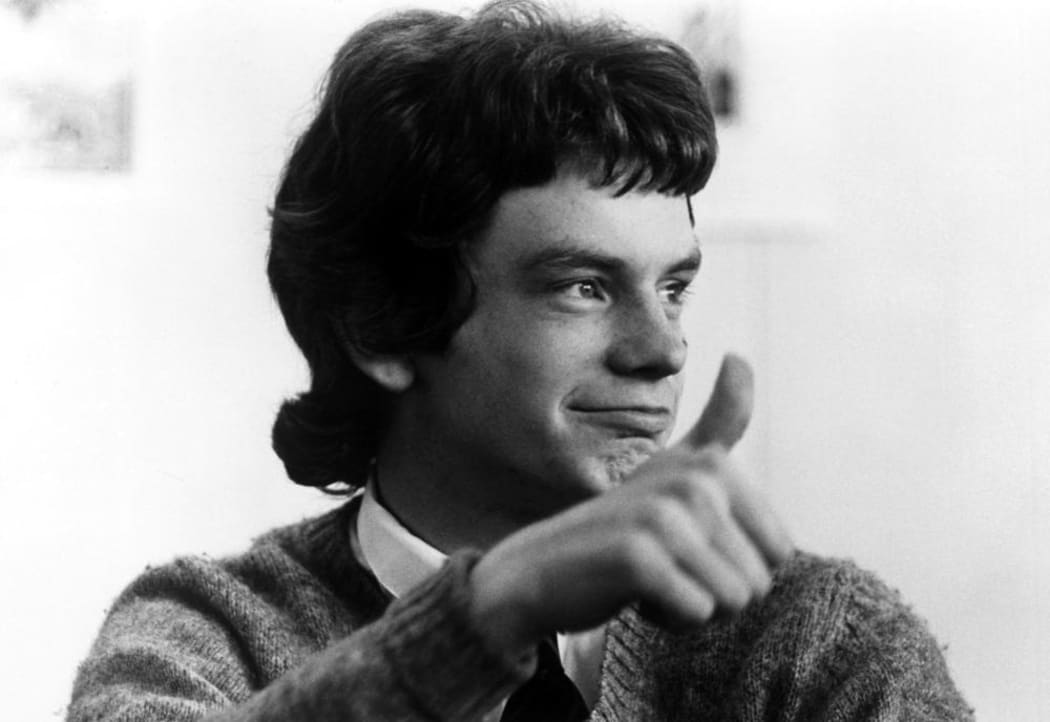Our pick of the best* and most interesting screen-related articles and features from around the web this week.

John Gordon Sinclair in Bill Forsyth's Gregory's Girl (1981) Photo: Samuel Goldwyn
Bill Forsyth’s Gregory’s Girl is one of Widescreen’s favourite films (Top 3 ever! - ed.) so we were especially pleased to find this little oral history of the making of it at the Guardian:
John Gordon Sinclair (Gregory)
We were all about the same age, but everyone was a bit in awe of Dee Hepburn, who played Dorothy, the girl who makes it into the school football team, and the one Gregory tries – and fails – to date. She was already a professional actor. For the football scenes, she actually trained with Partick Thistle.
Lovers of screen soundtracks will be delighted by this new RNZ resource: Sonic World of Cinema, a collection of RNZ features and items relating to film music. There's a massive amount of material here to devour and, of course, special attention has been paid to New Zealand content:
A well-crafted soundtrack can transport us into whatever world the film-makers have conjured up. And long after we’ve left the cinema the music has the ability to take us right back there.
Sample the best of recent film soundtracks, re-frame movie scores from the past that have refused to deteriorate with time, discover obscure film music (whether 1960s Czech fantasy, Japanese horror, or B-grade sci-fi).
Victoria University academic Miriam Ross is one of the world's experts on stereoscopy and 3D. Here she compares two recent releases and asks whether commercial 3D cinema has found something of a new visual language:
Also worth noting is that The Martian has one sequence that is particularly unique. Although many 3D films have slow motion sequences, this is the first that I can remember to have a fast motion sequence. Occurring when scientists back on Earth are setting up an alphabet to emulate the one Watley places in front of the Pathfinder probe, the sped up motion has a distinct visual feel in stereoscopic depth.
Richard Linklater spoke to Indiewire about why he thinks simultaneous releases in theatres and online is going to be great for indie filmmakers:
I think it's inevitable — it's where we're going, and I don't want to be too snobby about it. I remember when I made "A Scanner Darkly," going, "I hope people see it in theater — but I think it's going to be seen in someone's room at two in the morning." It's that kind of movie. And I would have loved if it had been available on multiple formats at the moment it opened. That would have been great. But it just gets the indie release that kind of is and isn't. And then it gets downloaded on BitTorrent a couple of million times, and then the producers don't make any money. So it's kind of a failure of the system to not meet people at the place they would want to see it.
This week Shia LaBeouf made another step forward in his transition from movie star to performance artist with #ALLMYMOVIES, a 72 hour live and online event in which he was filmed watching all of his own pictures (in reverse order) in a cinema in Manhattan. The public and media were invited to watch with him in the theatre and online viewers could watch his own reaction in real time. David Ehrlich in Rolling Stone was impressed:
#ALLMYMOVIES relies more upon visceral immediacy than it does intellectual heft, and is predicated on an incredibly simple idea: You can't pay attention to a film when one of its stars is sitting right in front of you. No one at the Angelika could avert their eyes from LaBeouf's utterly unremarkable head; everything happening on the screen was a complete afterthought. And like a millennial Benjamin Button or Boyhood in reverse, the installation led viewers back through time as LaBeouf reverts from our current conception of him to rising star and, eventually, just a curly-haired kid. All the while, the guy who was fighting Nazis, robots et al. on screen was sitting in our field of view, his static physical presence a constant contrast to the transformation projected behind him.
LaBeouf’s progress was also followed by people on Twitter and Instagram:
This is the happiest I've seen him #allmymovies pic.twitter.com/zzzdPS4b09
— Sam McCosh (@Sam_McCosh) November 12, 2015
[*May not be the actual best. We haven't read the entire internet.]

